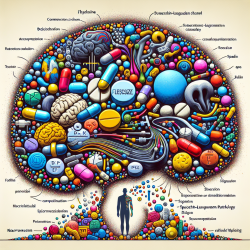As educators and therapists, we are constantly seeking effective methods to support the language development of children with developmental delays. The monograph, Interactive Language Teaching With Developmentally Delayed Children, provides valuable insights into an approach that has shown significant promise in this area. This method, known as Interactive Language Development Teaching (ILDT), is designed to foster language acquisition through engagement, interaction, and tailored instructional strategies.
The monograph outlines a pretest-posttest experimental study aimed at verifying the efficacy of ILDT in language intervention for developmentally delayed preschool children. The authors, Leong and Illerbrun, focus on the structure of the language system, including phonology, semantics, and syntax, while also touching upon the critical aspect of language use (pragmatics).
Key findings from this study highlight the importance of incorporating both comprehension and production aspects of language in training programs. The results suggest that significant mean gains can be achieved in both the Test of Auditory Comprehension of Language and Developmental Sentence Scoring, with minimal gains in the Peabody Picture Vocabulary Test. This indicates that a balanced focus on understanding and using language can lead to meaningful improvements in language skills among developmentally delayed children.
For practitioners looking to implement or refine their approach to language intervention, the ILDT method offers a comprehensive framework that emphasizes the interaction between motivation, experience, and the language system in language development. By incorporating ILDT principles into their practice, educators and therapists can create a more dynamic and effective learning environment that addresses the unique needs of each child.
The monograph also serves as a reminder of the complexity of language acquisition and the need for tailored intervention strategies. It encourages further research and exploration into the most effective methods for supporting language development in children with developmental delays.
In conclusion, Interactive Language Teaching With Developmentally Delayed Children provides a compelling case for the use of ILDT in educational and therapeutic settings. By focusing on interactive and engaging teaching methods, practitioners can unlock the potential of children with developmental delays, helping them to achieve significant progress in their language abilities. To read the original research paper, please follow this link: Interactive Language Teaching With Developmentally Delayed Children.










